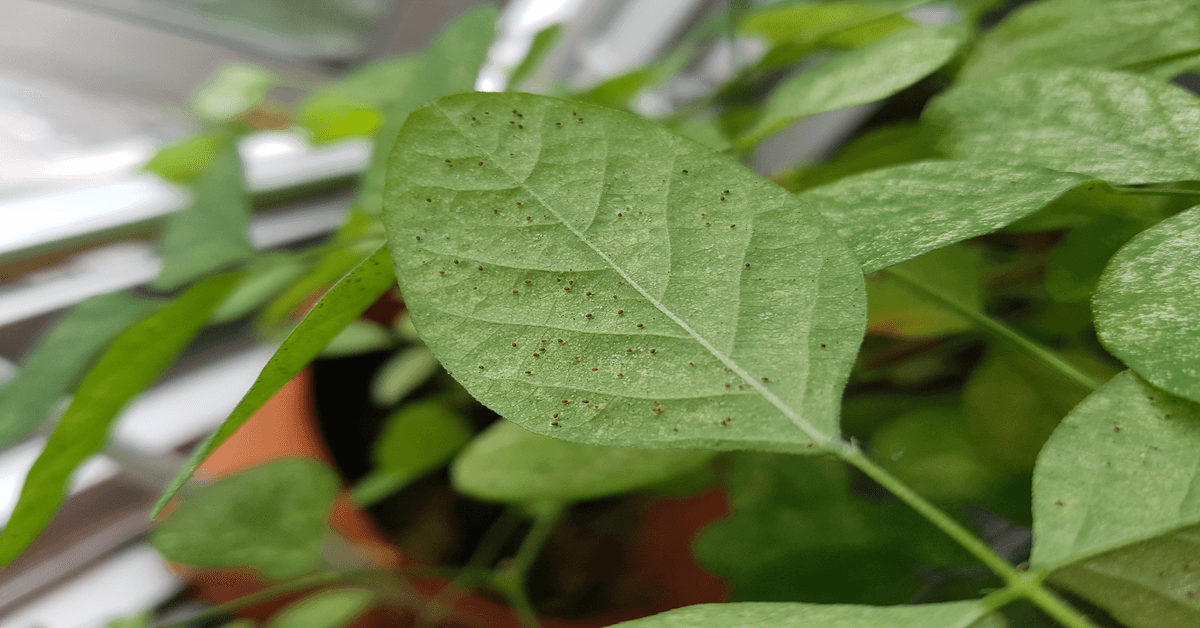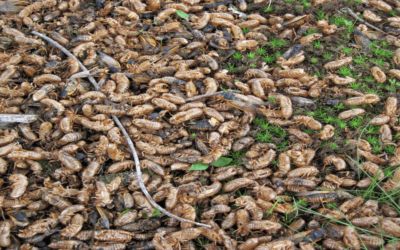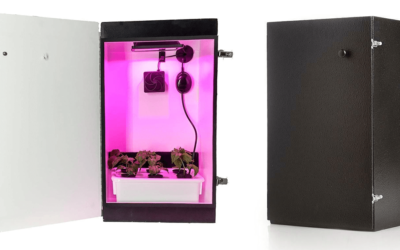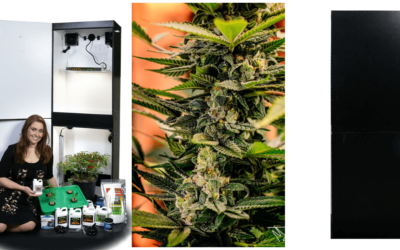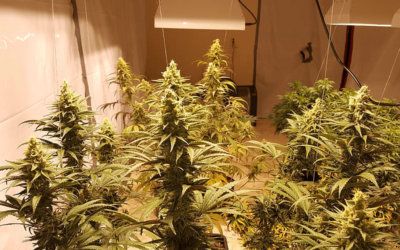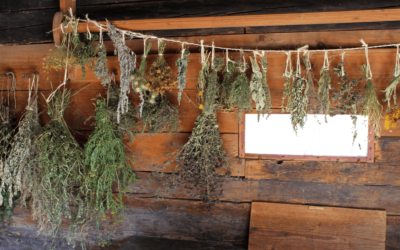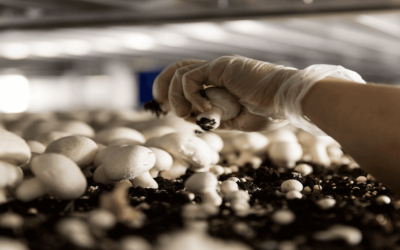If you practice farming, probably you have encountered spider mites. These tiny bugs affect plants in different ways and if not detected early, can cause huge damage to plant leaves. Some notable symptoms of an infestation include yellowing and defoliation of plant leaves.
These creepy sap eaters affect the complexity of plants and in extreme cases cause fruits to drop. Spider mites belong to the Acari family and like to stay on the underside part of leaves. Here, they suck plant sap and chlorophyll to survive. Although there are carnivorous kinds, most like to feed on plant juice.
Where Do Spider Mites Come From & How to Thrive Them Easily?
If you own a kitchen garden, you will notice silk webs on the underside of leaves. Discolored leaves are a potential symptom of an infestation. These pests make webs as a mechanism for deterring other predatory insects.
For most farmers, these bugs are a menace and that’s why it’s essential to control their spread early to reap great plant produce. Knowing better and in detail these bugs is crucial if you are a farmer. In this review post, we are going to look at different aspects concerning spider mites. All detailed information is factual, original and worthy reading.
How To Recognize Spider Mites?
These bugs are a distant cousin to the common spiders and have 4 pair of legs. In addition, they are tiny making it difficult for farmers to notice them.
A good tool for detecting presence of mites in plants is a magnifying glass. Different species exist with most of them being herbivorous in nature. Others are predatory and feed on small insects.
These bugs appear like dusty particles and usually attack the underside of plant leaves. By taking a close look, you will notice tiny whitish dust-like creatures. They crawl slowly and that’s why it’s tricky to notice them.
Spider mites consume on plant sap leaving dot bites on the affected parts. As they multiply, these bugs discolor plant leaves and by the time you notice, it could be too late.
While some thrive well in humid conditions, most multiply under dry weather conditions. If uncontrolled, these harmful bugs completely defoliate leaves and that’s why it’s crucial to check your plants once in a while.
Type of Food Consumed by Spider Mites
By nature, these creatures consume plant sweet sap. Also, they like to stay on the underside part of leaves and affect over three hundred species of plants. New emerging plant shoots are prone to spider mites infestation.
First, they attack leaves by consuming the sweet juicy sap. Plant cells have sweet sap which is their favorite meal. Spider mites also love the leaves’ chlorophyll and when it’s drained, leaves turn yellow.
Failure to recognize early spider mites’ plant infestation can lead to poor harvest and premature death of plants. Remember, spider mites like newly formed leaves and that’s why it’s crucial to check your garden time after time. Hardy leaves are resistant to spider mites infestation.
Not all types of bugs consume plant-based juices as there are some that eat insects. Insect-eating spider mites use silk webs to trap insects. All in all, carnivorous spider mites aren’t that many when compared to ones that consume plant sap.
The Life Cycle of Spider Mites
Spider mites’ life cycle comes in five distinct phases. Let’s take a look at these notable life cycle phases:
Egg
An adult spider mite reproduces by laying eggs on the underside of plant leaves. Females usually lay eggs in batches for over three weeks. A batch can have up to 100 eggs which makes these creatures multiply rapidly.
A funny thing is that unfertilized eggs hatch to male mites while the fertilized ones hatch to females. In most recorded cases, most eggs don’t get fertilized resulting in hatching of male mites. Laid eggs are tiny, hard to recognize and most farmers detect them when it’s too late.
Larva
The second stage is larva and the hatched eggs like consuming the plant leaf sap which is their primary food source. Hatched eggs have three pairs of legs which enable them hop from one leaf to the next. A common distinct feature about the larva is dark spots located on the backside.
Protonymph
In this phase, the larva becomes still. The larva uses less energy leading to growth of more legs. The growth of new legs helps spider mites build webs. During this life cycle stage, the larva only feasts for pleasure and is usually inactive.
Deutonymph
At this stage, the protonymph matures and becomes deutonymph. This is the middle stage and you can vividly recognize the deutonymph through its hard external body complexion.
The shedding of the exterior body helps the deutonymph expand largely. The building of silk webs is paramount at this stage for protection and by looking at the underside of plant leaves, you will notice them.
Adult Phase
The deutonymph has been resting and growing to become a fully grown spider mite all along. Fully grown spider mites have different color variations. The color variation originates from the different kinds of plant leaves where the eggs were laid.
Females start laying eggs at this stage and are sexually active in less than a week. The laid eggs hatch in three days and it takes a fortnight for them to become fully grown spider mites. The overall lifetime of these pests lasts for about two months.
Notable Places Where Do Spider Mites Come From & Thrive
These creepy creatures like to hide in enclosed places to reproduce and safely thrive. Dry and hot weather conditions promote the overall reproduction of these bugs. During the summer period, you will notice them attached to the underside of plant leaves. Let’s look at some common places where do spider mites come from to prevent spider mites from damaging your plants and the best tips to thrive them easily.
1.Plants
Spider mites thrive best in young leafy plants and multiply vastly in dry weather conditions. Compact spaced plants are the most affected and harness the overall thriving of new hatched eggs. As such, it’s wise to always distance plants when planting to avoid an infestation.
When introducing new plants to your kitchen garden, it’s recommendable to sanitize them with a convenient pesticide. If you are faced with an infestation, seek from your local agriculture expert about the convenient products to use.
2.Plants Buying Centers
Plants and garden buying places are commonplace where the mites thrive. These places are stuffed with different kinds of plants making it possible for different species of pests to multiply rapidly. Remember, plant buying centers are compact and harbor thriving of mites.
When introducing new plants to your kitchen garden, it’s essential to always sanitize them. All species of mites are migratory in nature and cause huge damage to plants. If left uncontrolled, your plants will die within weeks of an infestation.
When adding new plants to your kitchen garden, check thoroughly for signs of a mites infestation. If you come across yellowish and defoliated plant leaves, probably, there could be a spider mite infestation.
Before embarking to buy flower plants, it’s essential to scan for potential mites’ existence. If you come across any, avoid buying such plants.
3.Unhygienic Conditions
Un-cleaned plants usually support thriving of these harmful plant based mites. When buying new plants, it’s wise to clean them gently. Dust attracts the sap sucking pests and that why it’s important to remove ducts from plant leaves.
Cleaning plants deters the thriving, reproduction and also suppresses ability of the pests to migrate other plants. Ensure you utilize a convenient pesticide or insecticide when cleaning newly purchased plants.
4.Vegetative Plants
Enormous and vegetative plants are common places where spider bugs thrive best. During vegetative growth stage of plants these, creatures multiply vast.
Overgrown plants usually attract mites due to the large leaf surface area where they consume plant sap. It’s wise to distance plants and also prune them regularly.
5.Excess Nitrogen Accumulation
Plants require nitrogen but an excess accumulation can be hazardous. A common menace associated with excess accumulation of nitrogen is mite infestation and more so the spider kind. Excess nitrogen causes plants to produce proteins in huge amounts.
Excess production of proteins makes plant leaves release sap. Released sap is sweet in nature and attracts insects of all kinds. Most insects like consuming the sweet sap making it a good place for mites to thrive.
As such, it’s essential to have the right nitrogen content to enable plants grow healthy while at the same time avoiding a spider mite infestation. Inquire from your local agriculturist on ways to add the right nitrogen content suitable for plants.
6.Animals
Who doesn’t like hanging around with a pet animal be it a dog or cat? These friendly creatures have fur which gives mites a place to breed. Mites also like to hide in feathers of birds especially chickens. A good way of curbing the spread and thriving of mites is to regularly wash pets.
When washing pets, utilize a convenient inoculant to kill eggs and full-grown ones. Also, try brushing the fur of pets, to expose hidden eggs. Since pets are playful creatures and can get an infestation from different places, it becomes paramount to bathe them once in a while.
7.Cloth Wear
Shoes and clothes usually harbor bugs more so when it’s dusty. If you own a kitchen garden or farm, you will find yourself navigating plants of all kinds. Like we said earlier on, plants attract these creatures and your cloth wear can come into contact with them.
Clothes and shoes can’t be protected from dust. To curb the spread of the harmful plant pests, regularly clean shoes and clothes. Cleaning laundry with an antiseptic soap kills the acaris’ conveniently.
How To Control Plant Based Spider Mites
The moment you notice an infestation, it’s wise to get rid of these harmful pests instantly. One of the greatest ways of killing these harmful creatures is use of chemicals.
Chemicals stop maturing of laid eggs thus avoiding the emergence of newborn mites. Other notable methods include; physical and biological means. Let’s look at some common ways of eliminating a plant mite infestation.
Use of Miticide
Miticide is an effective chemical formulation that inhibits thriving of different mite species. Neem oil is a common remedy that is organic and helps to repel mites away. The only concern about neem oil is the clogging of hydroponic pipe nozzles.
if you notice a mite infestation, it’s wise to seek advice on the best Miticide product from an agriculture expert. Some Miticide brands work better than others and that’s why it’s essential to affiliate yourself with a convenient Miticide product.
Biological Means
Spider mites have a variety of predators that reproduce on outside farming projects. You can buy biological predators from agriculture-based research centers. Purchased predators are a better means for controlling these bugs.
It’s wise to recognize that predatory means of controlling a plant mite attack isn’t perfect. For effective elimination, it’s essential to release predatory insects more than once. Also, the climate conditions affect the control of sap sucking mites via biological method.
Physical means
Physical means of controlling sap sucking spider mites works best when an infestation is detected early. Controlling these bugs via physical means is convenient if you have few plants.
To eliminate them, prune the affected leaves and burn them. Importantly, it’s wise to know the effect of pruning since when done excessively, you can affect the overall growth of plants. Physical means of curbing an attack isn’t effective compared to chemical means.
Final Verdict
Spider mites affect the overall growth of plants by sucking the sap content found in leaves. Most people think they are insects but aren’t. Biologically, they are classified as pests and multiply rapidly under dry weather conditions.
If not controlled early, they can become rogue and that’s why it’s paramount to check regularly your plants for signs of an infestation. Inspect your farm or kitchen garden often to detect potential infestation.
From chemical, biological to physical means, there are diverse ways you can utilize to eliminate these harmful bugs. Choose a convenient means for curbing plant based mites’ infestation to avoid incurring plant produce losses.

